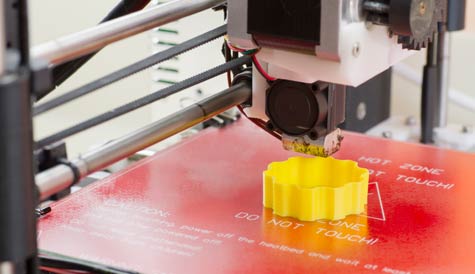The ones thinking hardest about the uses of 3D printing are those who can make a profit. Forbes reports that Wanted Analytics found that 35 percent of all posted advertisements for engineering jobs during the past month feature 3D printing and “additive manufacturing,” which is a related technique.
The percentage increases in job postings for 3D printing are enormous in just the past few years. That’s understandable, of course, because the category is in its formative stages. Perhaps more interesting, though, are the manufacturing job categories that require 3D printing skills that are hot this year. They include industrial and mechanical engineers, application developers, commercial and industrial designers and marketing managers. The study also traces the industries that are most eager to hire people to work in 3D printing.
But where is 3D printing in its evolutionary arc? The answer, according to Stuff writer Stephen Graves, is not very far:
What you have to bear in mind is that we’re in the ‘dot matrix’ era of 3D printing; it’s at the same stage now that 2D printing was at in the early 80s. Some people owned expensive, low-resolution home printers, but the majority of people took their documents to the local print shop for a more professional polish.
Obviously, Graves’ assumption is that this will change. In addition to the normal evolution of technology, important patents concerning metal 3D printing will expire this year. This will impact costs. An interesting tidbit in the story is that Jay Leno has a 3D printer in what Graves describes as his “massive garage.” He uses it to print parts for his antique cars.
The technology of 3D printing has the potential to improve design and production of so many commodities. It also seems to be well understood by vendors. A key step in the commercialization of the technology is making it more readily available to consumers. Part of this, of course, will be the reduction in equipment costs over time.
To help consumers gain access, though, Microsoft this week updated the 3D printing app in Windows 8.1, according to eWeek. The 3D Builder R5 app enables folks to print in 3D without owning a printer. eWeek reports that the actual printing is done through Cubify, a cloud-based 3D printing service operated by 3D Systems. The approach not only frees consumers from needing to buy 3D printers, but also provides features and uses substances that aren’t available in consumer-grade units.
Carl Weinschenk covers telecom for IT Business Edge. He writes about wireless technology, disaster recovery/business continuity, cellular services, the Internet of Things, machine-to-machine communications and other emerging technologies and platforms. He also covers net neutrality and related regulatory issues. Weinschenk has written about the phone companies, cable operators and related companies for decades and is senior editor of Broadband Technology Report. He can be reached at [email protected] and via twitter at @DailyMusicBrk.




